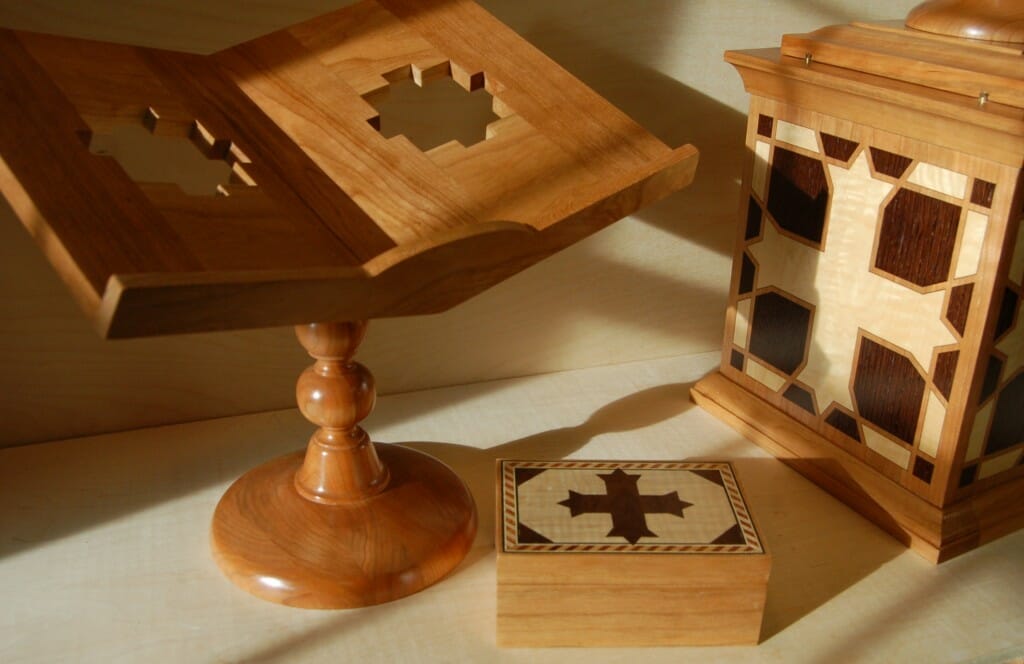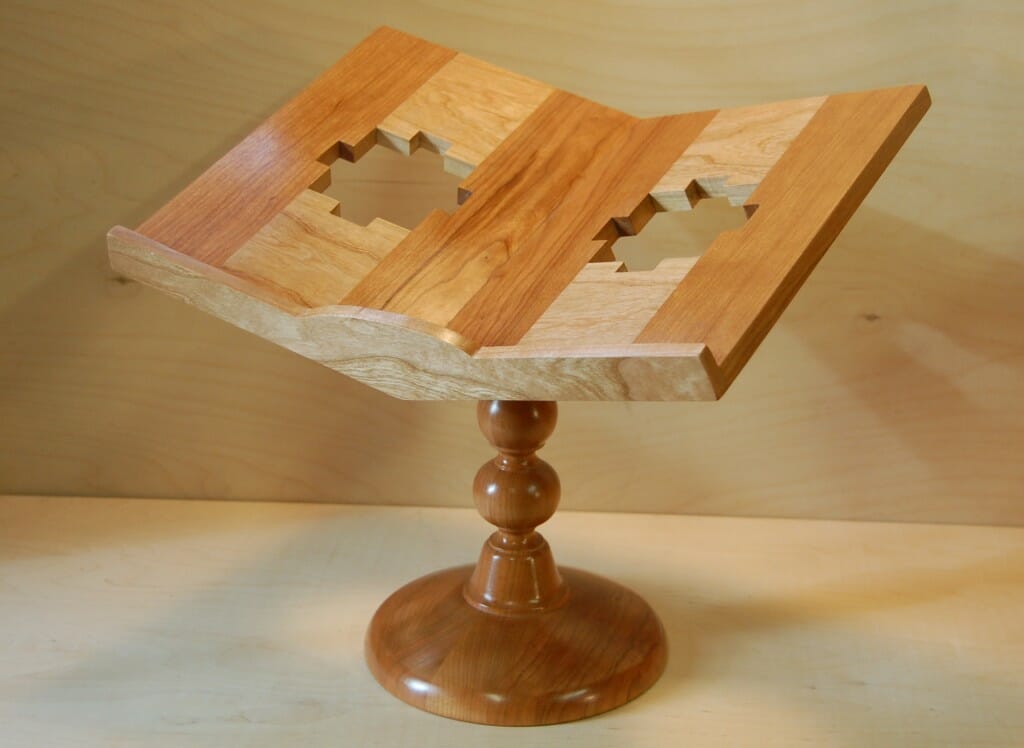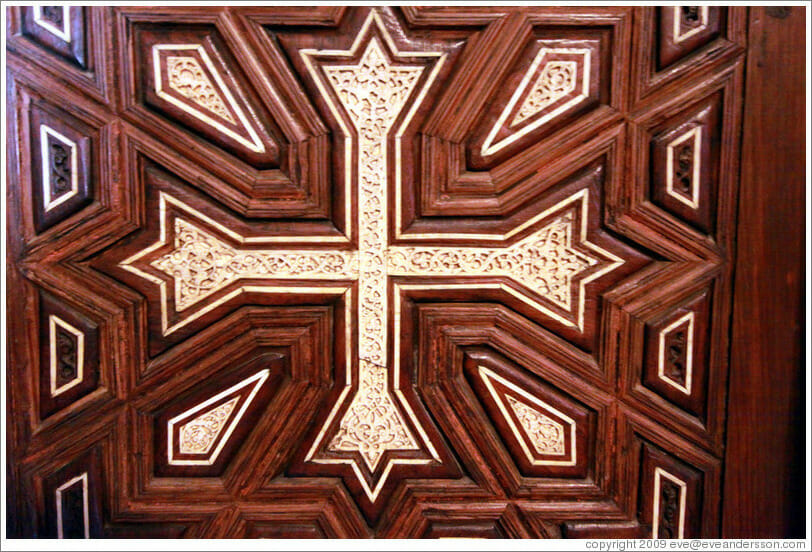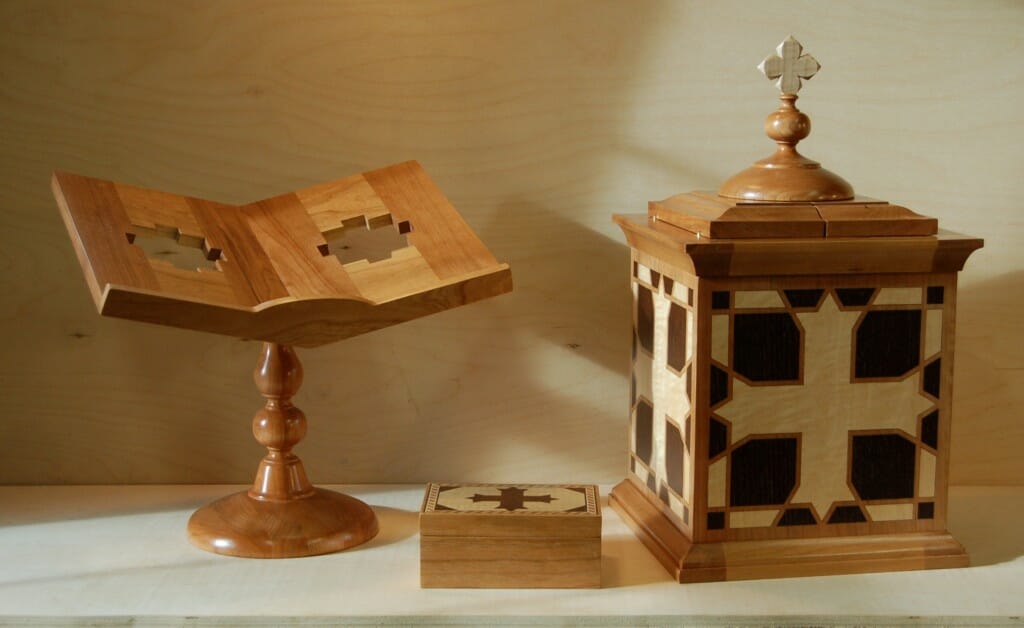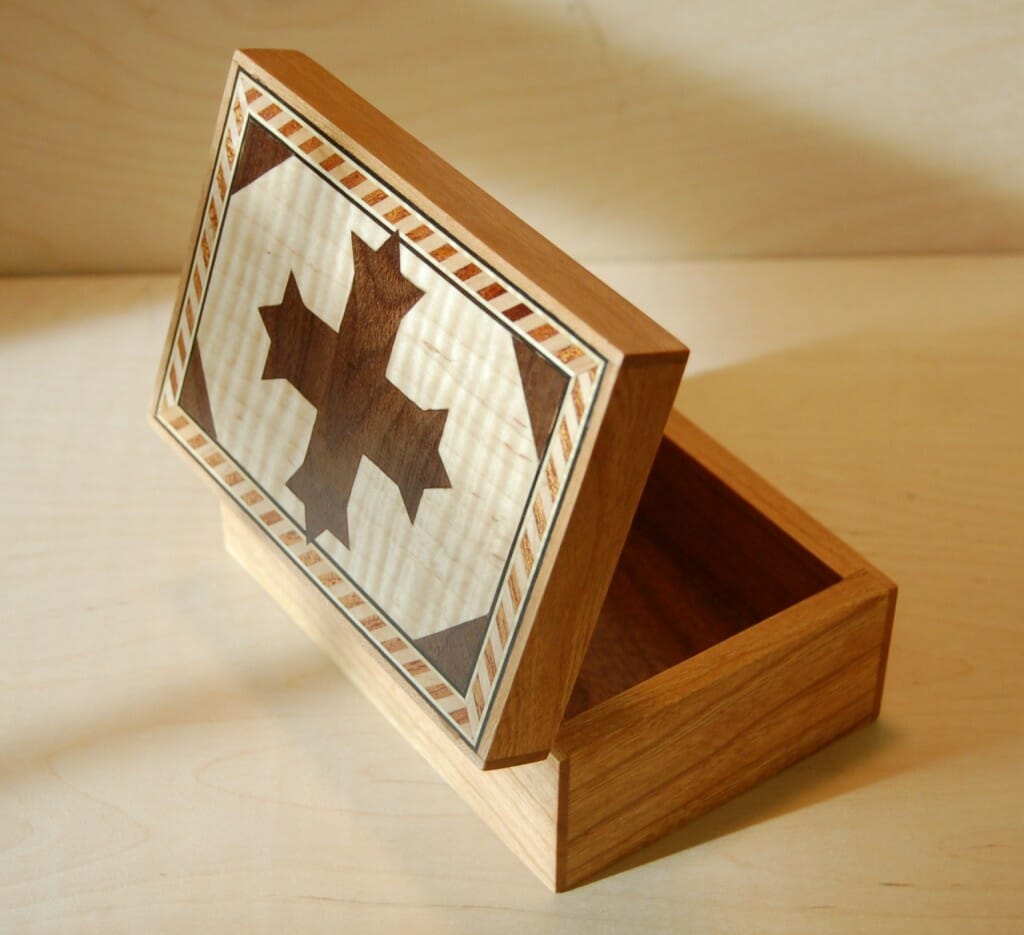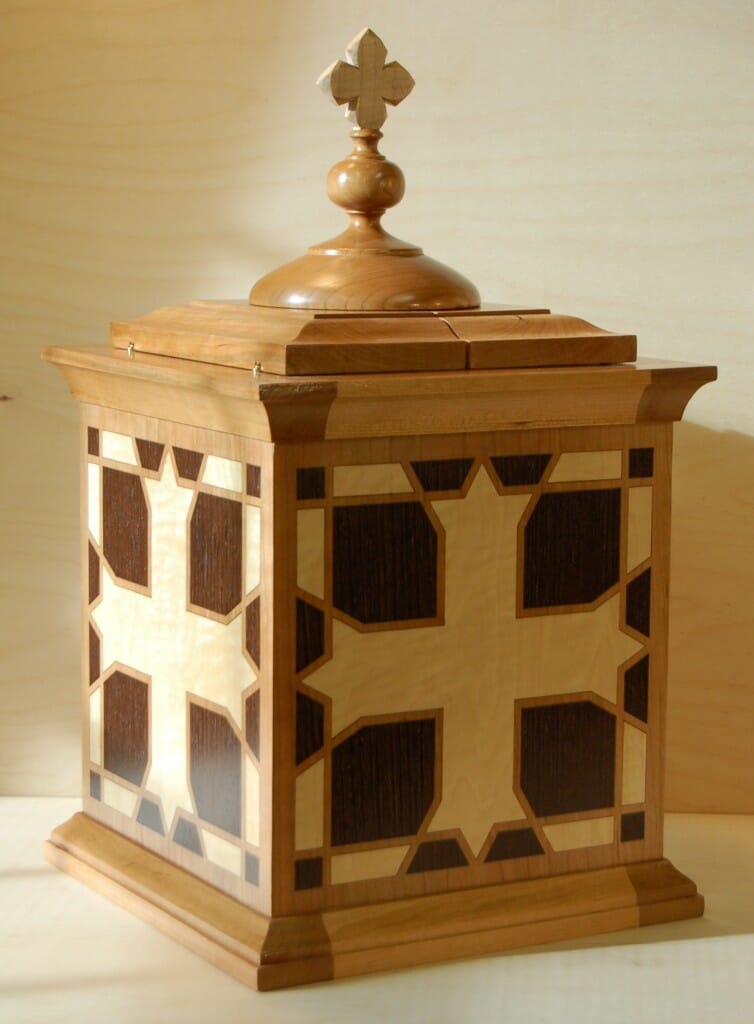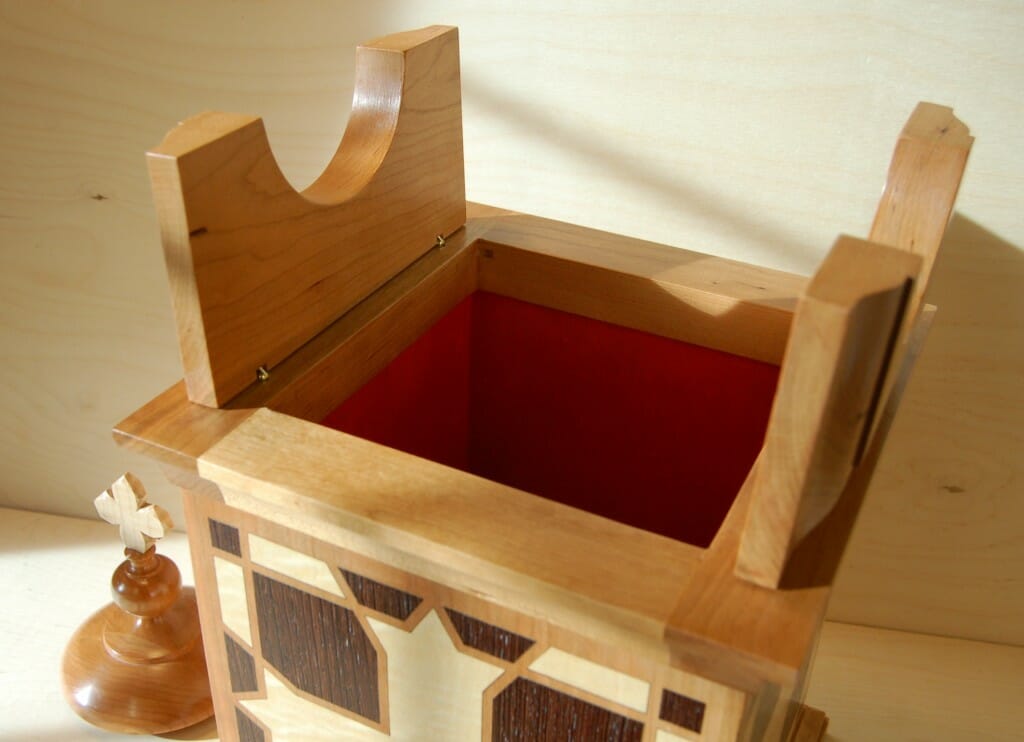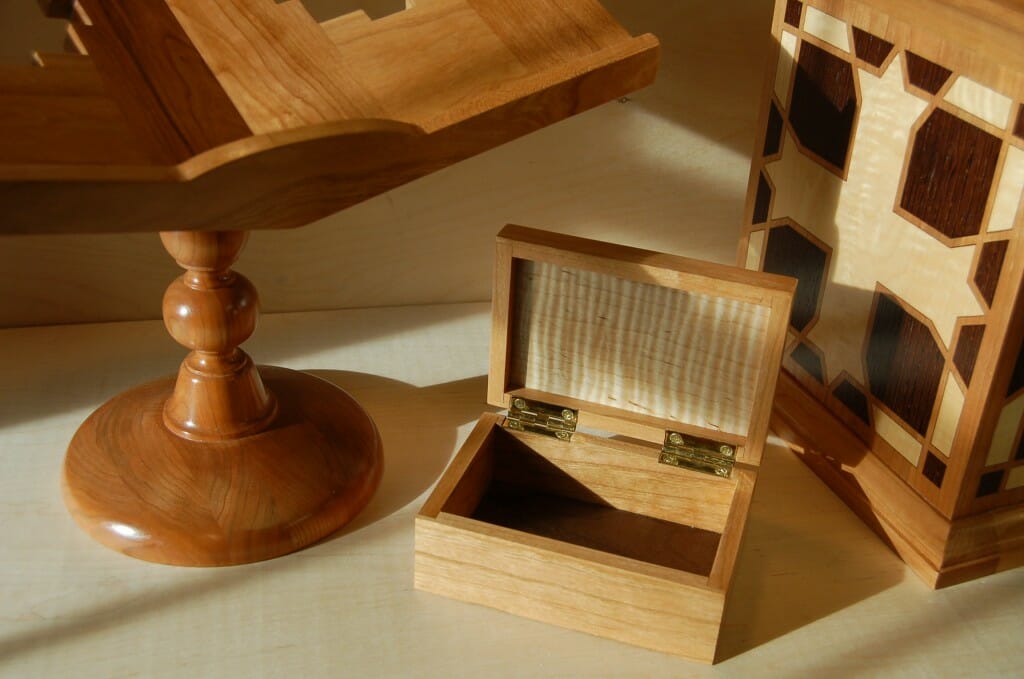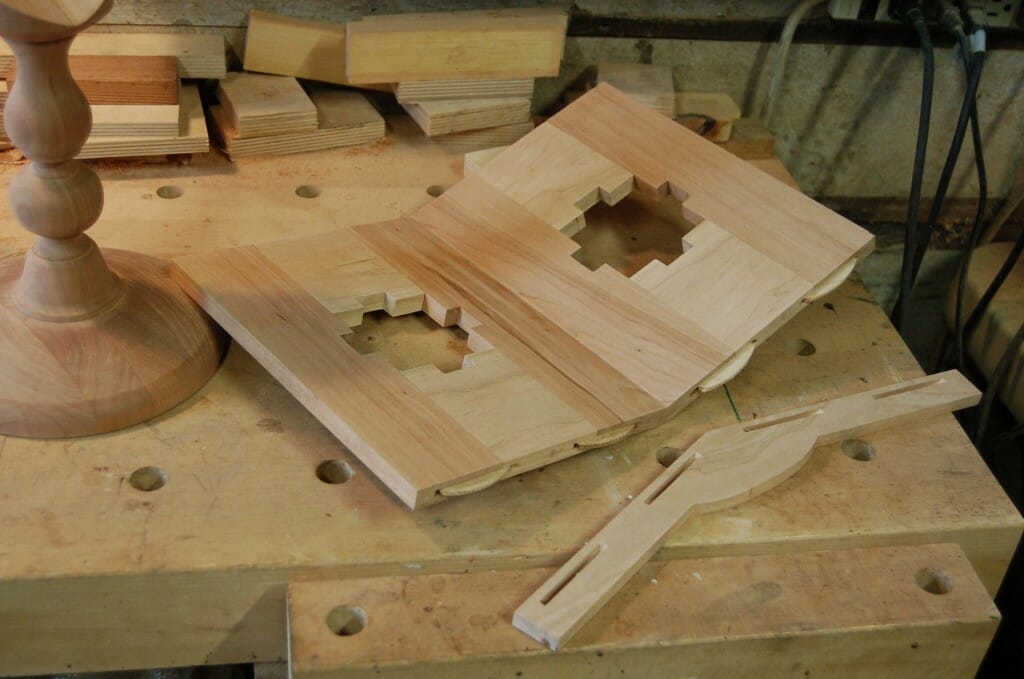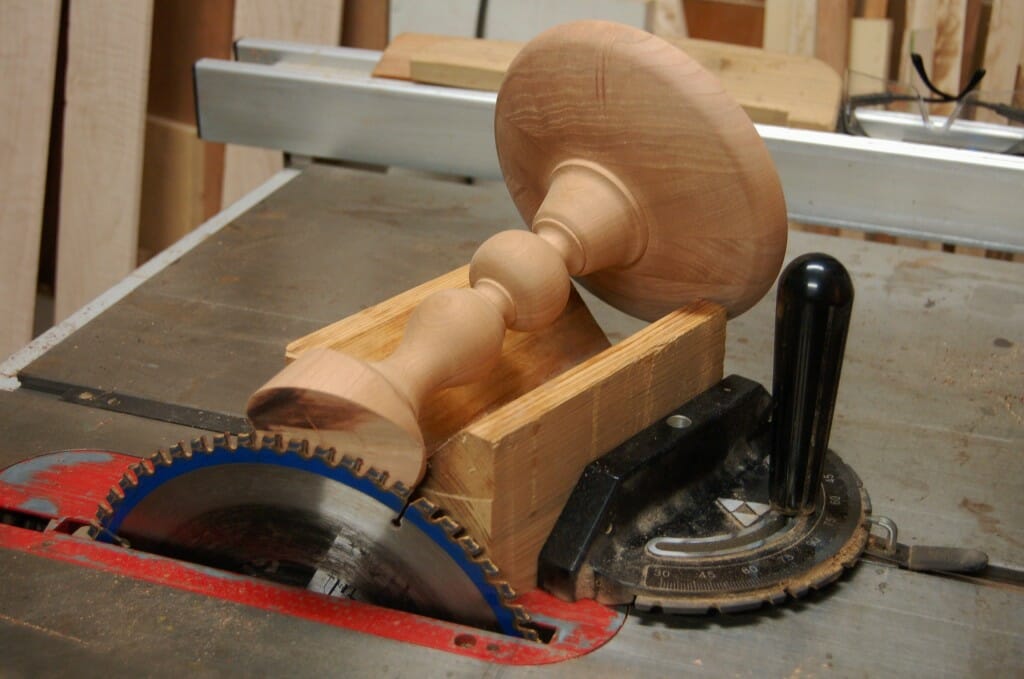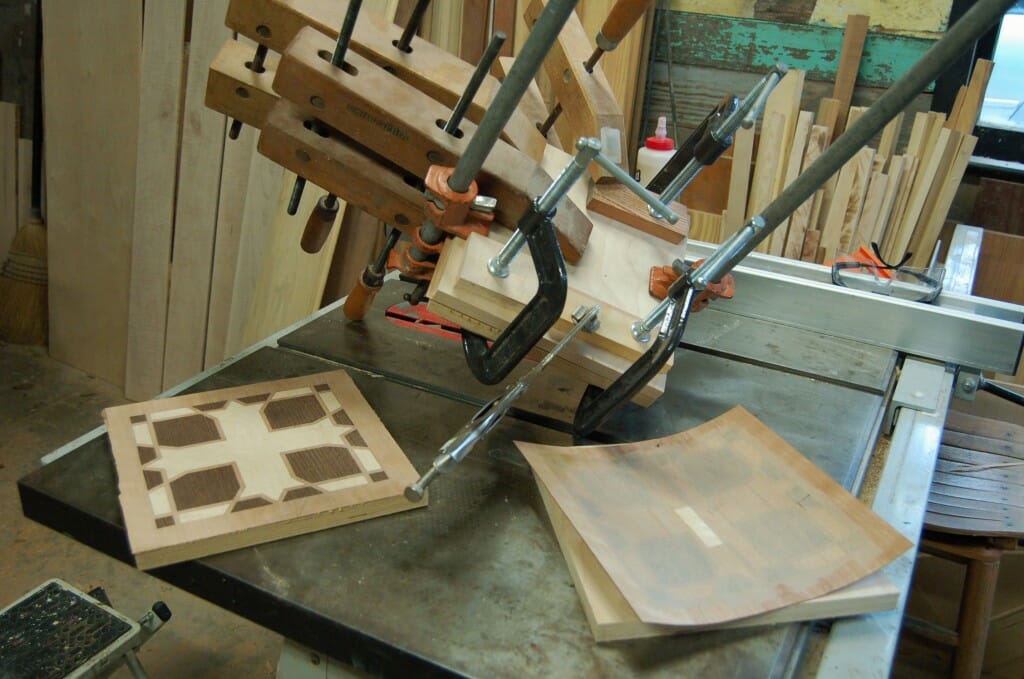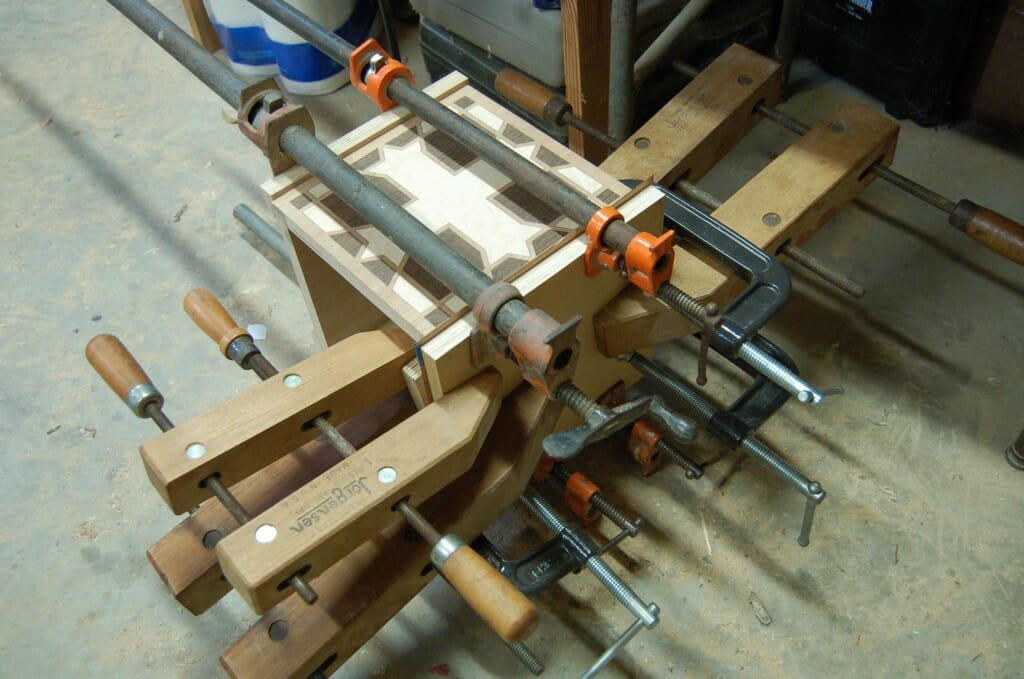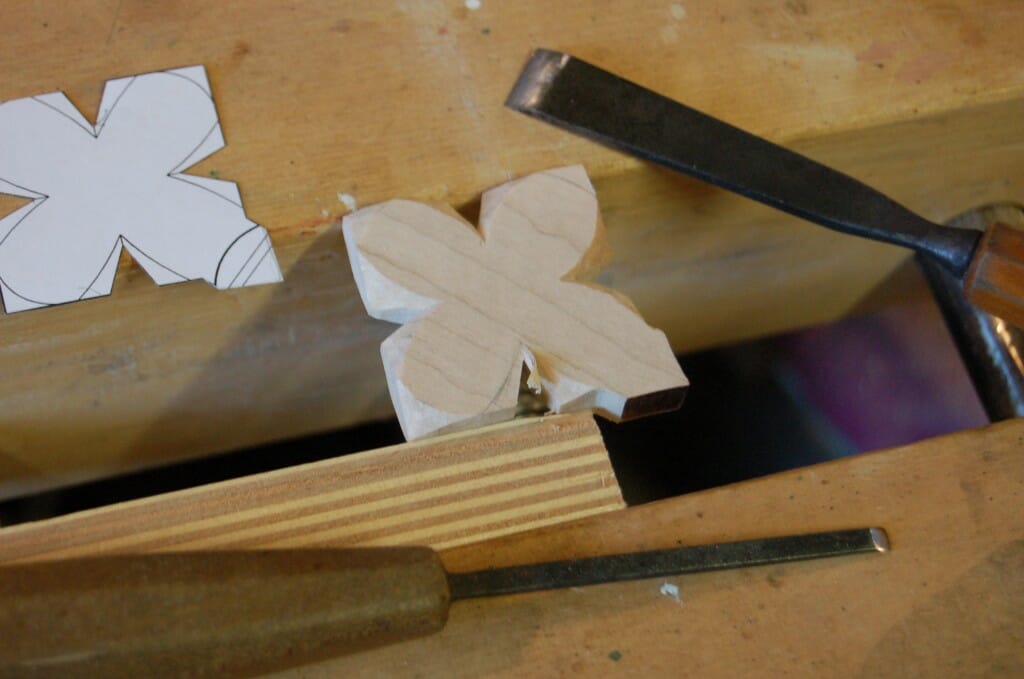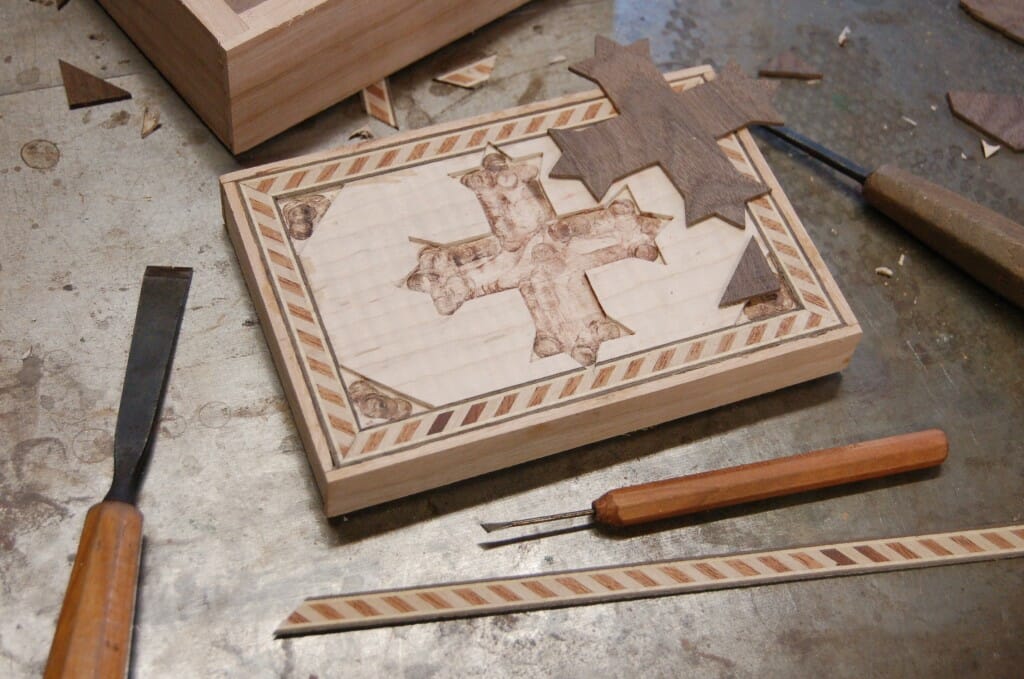Similar Posts
I have recently had the pleasure of making an altar set for a Coptic church. This project was somewhat of a challenge for me because the Coptic Church and her liturgical art is not my area of expertise. I had to learn about both the liturgical implements and the historical styles of woodwork unique to this tradition.
The Coptic altar includes a very interesting structure called a chalice holder, or ‘ark’. It is a box with a round hole at the top. The chalice is placed inside during the consecration. The ark usually has doors at the top to allow the chalice to be lifted out more easily, and a cover for the hole when not in use. A Coptic altar also features a book stand and an incense box.
In studying historic examples of Coptic altar sets, I was not able to find much that inspired me. The ark is sometimes painted with iconography, and newer examples are frequently covered with inlay in the typical style of ornate Egyptian furniture. But the quality of the modern pieces is not so good. I decided to look back to much older examples of woodwork in Egypt – some excellent medieval examples of doors and altar screens survive, for instance. These frequently include a particular shape of cross that nowadays serves as a sort of insignia of the Coptic Church. But the specific manner in which this historic woodwork is constructed involves numerous tiny moldings held in place with nails. This detailing, with its deep texture and Islamic influence, is quite foreign to our American tradition of woodworking. So I decided I would make an Altar set that is recognizably Coptic in form and in motif, but constructed with the simplicity and refinement of traditional American furniture.
Of course, this is the very same approach that I take when designing Byzantine or Russian inspired liturgical art – to unite the important aspects of the old-world examples with the best that our American heritage can offer.
The altar set is made from cherry wood and curly maple and decorated with marquetry and inlay. It is finished with shellac and wax.
Andrew Gould’s liturgical crafts can seen at his website: New World Byzantine Studios

